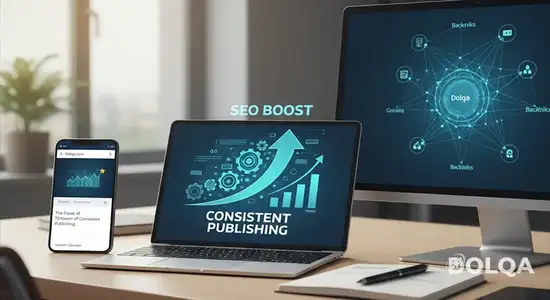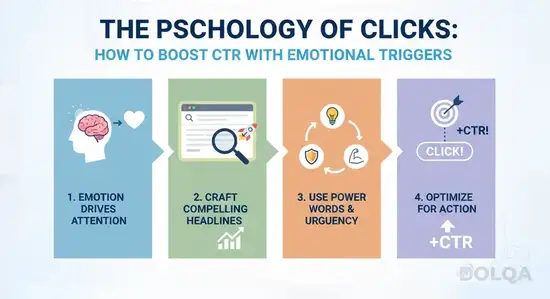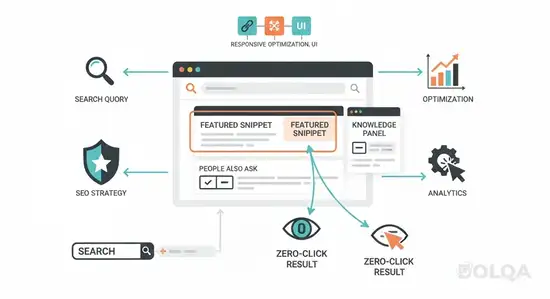Introduction
The search engine optimization landscape has undergone a seismic transformation in 2025, fundamentally altering how websites compete for visibility in Google's search results. As artificial intelligence reshapes user behavior and search algorithms evolve with unprecedented sophistication, digital marketing strategies must adapt to remain competitive. The emergence of AI Overviews, enhanced Google ranking factors emphasizing user experience, and the shift toward multi-modal search capabilities have created both challenges and opportunities for SEO professionals.
Understanding these dynamics is no longer optional—it's imperative for maintaining and improving organic search performance. This comprehensive guide explores the critical SEO trends 2025 brings to the forefront, providing actionable insights into the technical, content, and strategic elements that determine success in modern search engine optimization. Whether you're optimizing for traditional search results or positioning content for AI-generated summaries, this guide delivers the advanced knowledge necessary to stay ahead of the competition.
The Rise of AI-Powered Search Experiences
Google AI Overviews and AI Mode Transformation
Google's AI Mode represents the most advanced iteration of search technology, featuring enhanced reasoning capabilities and multimodality that fundamentally changes how users interact with search results. Unlike traditional search results that present a list of links, AI-powered experiences synthesize information from multiple sources, providing immediate answers while still offering pathways to explore content more deeply.
During the March 2025 core update, AI Overviews expanded significantly across entertainment, restaurants, and travel sectors, indicating Google's aggressive push toward AI-integrated search. This expansion affects how content gets discovered and consumed, requiring SEO professionals to optimize for both traditional ranking positions and AI Overview inclusion.
Optimizing for AI Search Results
To succeed in AI-augmented search environments, content must demonstrate exceptional clarity, authority, and structure. AI Overviews display links in various formats and showcase a broader range of sources, making it easier for users to explore content beyond the AI-generated summary. This creates opportunities for well-optimized content to capture traffic even when AI summaries appear.
Key optimization strategies include:
- Structuring content with clear hierarchies using proper heading tags (H1, H2, H3)
- Implementing schema markup to help AI systems understand content context
- Creating comprehensive answers that address user intent exhaustively
- Developing content that provides unique insights beyond surface-level information
- Ensuring technical excellence in page speed, mobile responsiveness, and Core Web Vitals
Required Tools:
- Google Search Console for monitoring AI Overview appearances
- Schema.org markup generators for structured data implementation
- AI content analysis tools like Clearscope or MarketMuse
- Page speed optimization tools (Google PageSpeed Insights, GTmetrix)
Content Quality and Information Gain
The Dominance of Satisfying Content
Consistent publication of satisfying content remains the number one factor in Google's algorithm, with the search engine rewarding regular producers of helpful information through faster indexing and superior rankings. However, "satisfying" extends beyond basic quality metrics-it encompasses information gain, unique perspectives, and demonstrable value that competitors cannot easily replicate.
Content that satisfies user intent has emerged as the primary ranking factor, with pages offering unique insights, problem-solving capabilities, or fresh perspectives consistently outperforming generic content. Google's emphasis on "information gain" means that recycled or superficially updated content faces significant ranking challenges.
E-E-A-T: Experience, Expertise, Authoritativeness, Trustworthiness
Google increasingly emphasizes E-E-A-T criteria, with Experience, Expertise, Authoritativeness, and Trustworthiness becoming crucial factors for understanding why certain pages achieve superior rankings. This framework has evolved to include personal experience as a distinct element, recognizing that first-hand knowledge provides value that purely research-based content cannot match.
Implementing E-E-A-T in your digital marketing strategies:
- Experience Signals: Incorporate first-hand accounts, case studies, and original research
- Expertise Demonstration: Showcase author credentials, certifications, and industry recognition
- Authority Building: Secure mentions and backlinks from recognized industry leaders
- Trustworthiness Enhancement: Implement security protocols, transparent business information, and verified reviews
Version Updates to Monitor:
- Google's Helpful Content System (ongoing refinements)
- Core Web Vitals thresholds (reviewed quarterly)
- E-E-A-T evaluator guidelines (updated semi-annually)
Technical SEO and User Experience Signals
Core Web Vitals and Page Experience
Technical performance continues to influence Google ranking factors significantly, with Core Web Vitals representing measurable components of user experience that directly impact search visibility. The three primary metrics-Largest Contentful Paint (LCP), First Input Delay (FID), and Cumulative Layout Shift (CLS)-provide quantitative assessments of loading performance, interactivity, and visual stability.
Google demonstrates proficiency in determining user satisfaction through metrics likely including click-through rate, dwell time, and bounce rate, shifting SEO toward optimizing for user engagement rather than purely technical factors.
Critical Technical Requirements:
- LCP: Target under 2.5 seconds for optimal performance
- INP (replacing FID): Maintain below 200 milliseconds for responsive interactions
- CLS: Keep below 0.1 to prevent layout shifts
- Mobile-First Indexing: Ensure mobile version matches or exceeds desktop functionality
Essential Software and Tools:
- Chrome DevTools for performance auditing
- WebPageTest for comprehensive speed analysis
- Lighthouse for automated auditing
- Real User Monitoring (RUM) tools like SpeedCurve or New Relic
Mobile Optimization Excellence
Mobile optimization in 2025 requires more than simple responsiveness, demanding sophisticated approaches to touch interactions, viewport considerations, and mobile-specific user behaviors. With mobile-first indexing firmly established, desktop performance no longer compensates for mobile deficiencies.
Strategic Backlink Building and Authority Development
Quality Over Quantity in Link Acquisition
High-quality backlinks remain fundamental Google ranking factors, but the definition of "quality" has become increasingly nuanced. Modern link evaluation extends beyond domain authority scores to assess contextual relevance, editorial standards, and the genuine value that linking pages provide to their audiences.
Advanced Link Building Strategies:
- Digital PR and Newsworthy Content: Create data-driven research that attracts organic media coverage
- Expert Contributions: Provide genuine expertise in industry publications and podcasts
- Strategic Partnerships: Develop mutually beneficial relationships with complementary businesses
- Broken Link Reclamation: Identify and replace broken links pointing to competitor resources
- Unlinked Mentions: Convert brand mentions without hyperlinks into active backlinks
Link Analysis Tools:
- Ahrefs for comprehensive backlink analysis
- Semrush for competitor link intelligence
- Moz Link Explorer for domain authority assessment
- Google Search Console for monitoring link profiles
Avoiding Link Spam and Penalties
Google emphasizes that core updates rely on long-term patterns rather than recent link spam, suggesting that algorithmic devaluations of manipulative links occur without manual penalties in most cases. However, aggressive link building or participation in link schemes can still trigger algorithmic suppression or manual actions.
Best Practices:
- Focus on editorial links earned through content merit
- Avoid private blog networks and link exchanges
- Disavow only in cases of negative SEO attacks or inherited toxic links
- Monitor link velocity to ensure natural growth patterns
Search Intent Optimization and Query Understanding
Multi-Vector Search and Semantic Understanding
Search intent optimization has evolved beyond keyword matching to encompass semantic relationships, contextual understanding, and user journey considerations. Google's multi-vector retrieval algorithm (MUVERA) enhances search speed, efficiency, and accuracy by processing multiple semantic signals simultaneously.
Intent Categories and Optimization Approaches:
- Informational Intent: Comprehensive guides, tutorials, and educational content
- Navigational Intent: Brand-focused content with clear site architecture
- Commercial Investigation: Detailed comparisons, reviews, and evaluation frameworks
- Transactional Intent: Streamlined conversion paths with clear calls-to-action
Query Fan-Out and Topic Clusters
The concept of "query fan-out" reflects how single user questions generate multiple related queries, particularly in AI-driven search experiences. Organizing content into comprehensive topic clusters that address primary queries and anticipated follow-up questions positions websites favorably for both traditional rankings and AI Overview inclusion.
Topic Cluster Structure:
- Pillar pages addressing broad topic areas
- Cluster content exploring specific subtopics in depth
- Internal linking connecting related content logically
- Schema markup identifying topical relationships
Local SEO Evolution and Engagement Signals
Google Business Profile Optimization
Peak-time traffic patterns now influence local rankings, with businesses experiencing higher engagement during busy hours tending to rank better, while reviews, video content, and Google Posts interactions increase profile time spent, signaling quality and relevance.
Review-related signals including quantity, quality, recency, and sentiment analysis have become essential ranking factors for local search engine optimization.
Local SEO Priorities:
- Google Business Profile Completeness: Ensure all information fields are populated accurately
- Review Generation and Management: Implement systematic review collection and response protocols
- Local Content Development: Create location-specific content addressing community needs
- NAP Consistency: Maintain identical Name, Address, Phone across all online platforms
- Local Link Building: Secure citations from local directories and community organizations
Recommended Local SEO Tools:
- BrightLocal for local rank tracking
- Whitespark for citation building
- GatherUp for review management
- Local Falcon for local rank tracking visualization
Video and Visual Search Optimization
Multi-Modal Content Integration
The proliferation of visual search capabilities and video consumption patterns necessitates comprehensive optimization strategies extending beyond traditional text-based SEO. Video content particularly offers opportunities for featured snippet positions, AI Overview inclusion, and enhanced SERP real estate.
Video SEO Best Practices:
- Host videos on your domain while leveraging YouTube for distribution
- Create detailed video transcripts for indexation
- Implement VideoObject schema markup
- Optimize thumbnails for click-through rate
- Include timestamps for content chapter markers
- Create video sitemaps for enhanced discovery
Image Optimization Requirements:
- Descriptive, keyword-relevant file names
- Comprehensive alt text for accessibility and indexation
- Next-generation formats (WebP, AVIF) for performance
- Responsive images serving appropriate sizes
- Structured data for image licensing and attribution
Measurement, Analytics, and Continuous Improvement
Advanced Performance Tracking
Sophisticated measurement frameworks distinguish successful SEO programs from those that stagnate. Beyond basic traffic metrics, comprehensive analytics encompass engagement signals, conversion attribution, and competitive intelligence.
Key Performance Indicators (KPIs):
- Organic Traffic Growth: Total sessions and users from organic search
- Ranking Position Changes: Tracking for target keywords across all search features
- AI Overview Appearances: Monitoring inclusion in AI-generated results
- Click-Through Rates: Performance relative to position benchmarks
- Engagement Metrics: Time on site, pages per session, scroll depth
- Conversion Attribution: Revenue and leads attributed to organic channels
- Share of Voice: Competitive visibility in target keyword sets
Analytics Platform Stack:
- Google Analytics 4 for comprehensive user behavior analysis
- Google Search Console for search performance data
- Rank tracking tools (Semrush, Ahrefs, or SE Ranking)
- Heat mapping software (Hotjar or Crazy Egg)
- Data visualization platforms (Google Data Studio or Tableau)
A/B Testing and Experimentation
Systematic testing separates assumptions from data-driven insights, enabling continuous optimization based on empirical evidence rather than best practice generalizations.
Testing Opportunities:
- Title tag variations for improved click-through rates
- Content structure modifications for enhanced engagement
- Internal linking architecture adjustments
- Schema markup implementation impact
- Page speed optimization interventions
Emerging Technologies and Future-Proofing Strategies
Preparing for Voice Search and Conversational AI
Voice-activated search queries exhibit distinct characteristics from typed searches, typically featuring longer, more conversational phrasing and question-based formats. Optimizing for voice search requires anticipating natural language patterns and providing concise, directly relevant answers.
Voice Search Optimization Tactics:
- Target question-based keywords and phrases
- Implement FAQ schema markup
- Optimize for local "near me" searches
- Create content answering specific questions concisely
- Focus on featured snippet optimization
Blockchain and Web3 Considerations
While still emerging, decentralized web technologies may influence future search ecosystems. Staying informed about developments in blockchain-based identity verification, content attribution, and decentralized platforms positions organizations advantageously as these technologies mature.
Common SEO Pitfalls and How to Avoid Them
Over-Optimization and Algorithmic Penalties
Aggressive optimization tactics often backfire, triggering algorithmic devaluations or manual penalties. Common mistakes include:
- Keyword Stuffing: Unnatural keyword density disrupting readability
- Thin Content: Pages providing minimal value beyond keyword targeting
- Manipulative Link Building: Participation in schemes violating Google guidelines
- Cloaking: Presenting different content to users versus search engines
- Hidden Text: Concealing keyword-rich content from users
Technical Debt Accumulation
Neglecting technical maintenance creates compounding issues that eventually undermine SEO performance:
- Broken internal links reducing crawl efficiency
- Orphaned pages disconnected from site architecture
- Duplicate content without proper canonicalization
- Slow page speed from unoptimized media
- Mobile usability issues affecting user experience
Preventative Maintenance Schedule:
- Monthly technical audits using Screaming Frog or Sitebulb
- Quarterly content audits identifying thin or outdated pages
- Semi-annual backlink profile reviews
- Continuous Core Web Vitals monitoring
Building Sustainable SEO Programs
Creating SEO Roadmaps and Strategic Plans
Sustainable search engine optimization requires strategic planning extending beyond tactical implementations. Effective roadmaps align SEO initiatives with broader business objectives, ensuring resource allocation supports revenue generation and competitive positioning.
Roadmap Components:
- Baseline Assessment: Current performance analysis and competitive benchmarking
- Opportunity Identification: Keyword gaps, technical issues, and content deficiencies
- Prioritization Framework: Impact versus effort matrix for initiative sequencing
- Resource Allocation: Budget and team capacity planning
- Timeline Definition: Realistic milestones with measurable outcomes
- Success Metrics: Quantitative and qualitative performance indicators
Cross-Functional Collaboration
SEO success depends on coordination across organizational functions. Development teams implement technical optimizations, content teams produce optimized assets, and executive leadership provides strategic direction and resources.
Key Collaboration Points:
- Product development incorporating SEO considerations in roadmaps
- Content marketing aligning editorial calendars with keyword strategies
- Web development implementing technical recommendations efficiently
- Sales and customer service providing insight into customer questions and pain points
Conclusion
The SEO trends 2025 brings to the forefront represent both evolutionary refinements and revolutionary changes in how search engines evaluate and rank content. From AI-powered search experiences fundamentally altering user interactions to sophisticated Google ranking factors emphasizing genuine user value, success requires adapting digital marketing strategies to prioritize quality, expertise, and user experience above manipulative tactics.
Sustainable search engine optimization in this environment demands technical excellence, authoritative content creation, strategic link acquisition, and comprehensive optimization across traditional search results and emerging AI-driven experiences. By implementing the frameworks, tools, and strategies outlined in this guide, SEO professionals can position their websites advantageously for long-term organic growth.
The key differentiator between thriving and struggling websites lies not in discovering secret ranking factors, but in consistent execution of proven strategies, continuous adaptation to algorithmic changes, and unwavering commitment to providing genuine value to users. Start implementing these SEO trends 2025 introduces today, measure results systematically, and refine your approach based on data-driven insights to maintain competitive advantages in Google's ever-evolving search landscape.
Ready to elevate your SEO performance? Begin with a comprehensive technical audit, develop a strategic content roadmap aligned with user intent, and implement systematic optimization across all critical ranking factors. The future of search rewards those who prepare today.
Sources and References
This comprehensive guide incorporates insights and data from multiple authoritative sources to ensure accuracy and currency:
- Search Engine Journal: Leading publication covering SEO industry news, algorithm updates, and best practices
- Google Search Central Blog: Official guidance from Google on search features and optimization strategies
- Backlinko: Research-driven SEO insights and ranking factor analysis
- First Page Sage: In-depth algorithm analysis and ranking factor identification
- Semrush: Data-driven studies on AI Overviews and search trends
- BrightEdge: Enterprise SEO platform providing comprehensive search intelligence







Comments (0)
Leave a Comment
No comments yet. Be the first to comment!